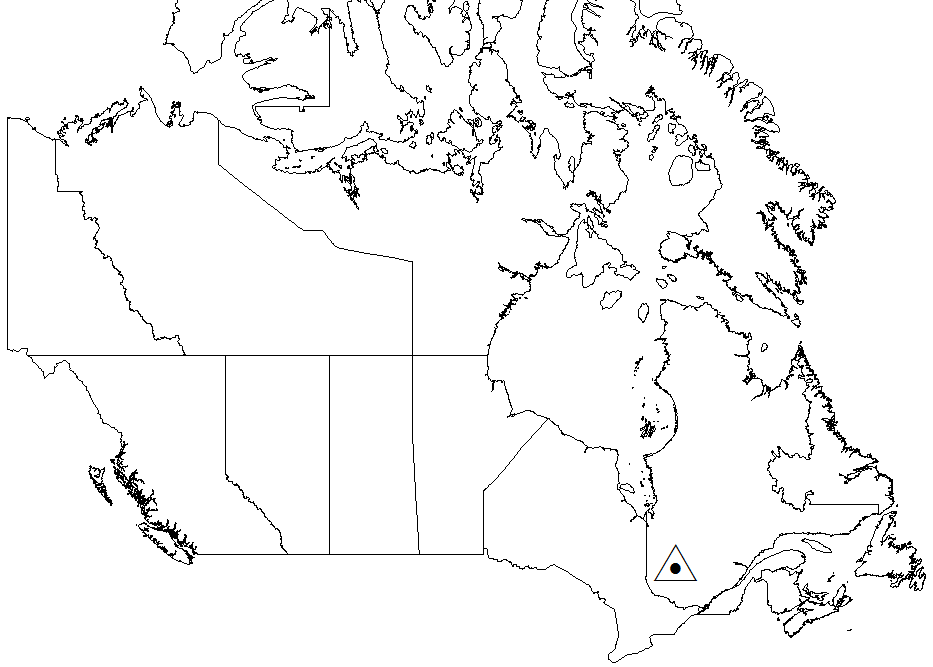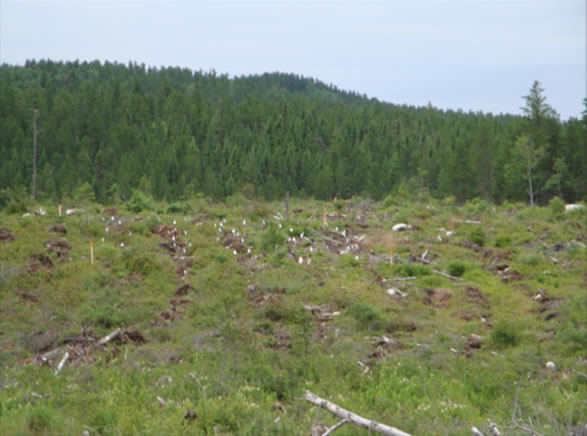Senneterre 3 wood ash trial

Location
Northwest Quebec
Ecozone: Boreal Shield
Elevation: 432 m
Climate
1981 to 2010 monthly climate point estimates generated from the Natural Resources Canada climate modeling project.
Mean annual precipitation: 969 mm and 979 mm
Mean minimum temperature in January: −23.9°C and −24.0°C
Mean maximum temperature in July: 23.0°C and 22.8°C
Site description
Before the experiment, the site supported a jack pine (Pinus banksiana Lamb.) and black spruce (Picea mariana (Mill.) BSP) stand that had regenerated after wildfire. The soils developed from coarse till material and have a loamy sand texture. They are predominantly Eluviated Dystric Brunisols with a 10- to 15-cm forest floor layer that consists primarily of feathermoss.
Ash description
The ash used in the Senneterre 3 wood ash trial was produced in a thermal power production biomass boiler. The ash feedstock was predominantly softwood bark and shavings. Only fly ash was used for the experiment, and the ash was not pretreated before application.
Treatment description

In the summer of 2007, the site was clearcut, and in the following autumn, ash treatments were applied at three rates: 0 Mg ash per ha (control treatment), 7.5 Mg ash per ha, or 15 Mg ash per ha. The quantity of ash applied (Mg per ha) was calculated based on the dry weight of the ash, and the ash was applied to the soil surface using a mechanical spreader. Following ash applications, the sites were disc-trenched which created parallel rows of trenches for planting. Treatments were replicated across three different blocks when the experiment was set up. In June 2008, black spruce and jack pine seedlings were planted at a density of 2,500 stems per ha. The seedlings in half of the plots were spot-fertilized with 26-21-0-4.6 (Nitrogen-Phosphorus-Potassium-Sulphur).
Monitoring
Monitoring treatment effects on trees and soil chemistry is ongoing. Data being collected include:
- Trees
- Survival and health
- Height and diameter
- Foliar nutrients
- Soil chemistry
- Acidity (pH)
- Total carbon and nitrogen
- Exchangeable cations
- Available phosphorus
Main contacts
Nicolas Bélanger, Professor, Department of Science and Technology, Université TÉLUQ
Suzanne Brais, Retired Professor, Université du Québec en Abitibi-Témiscamingue
Page details
- Date modified: